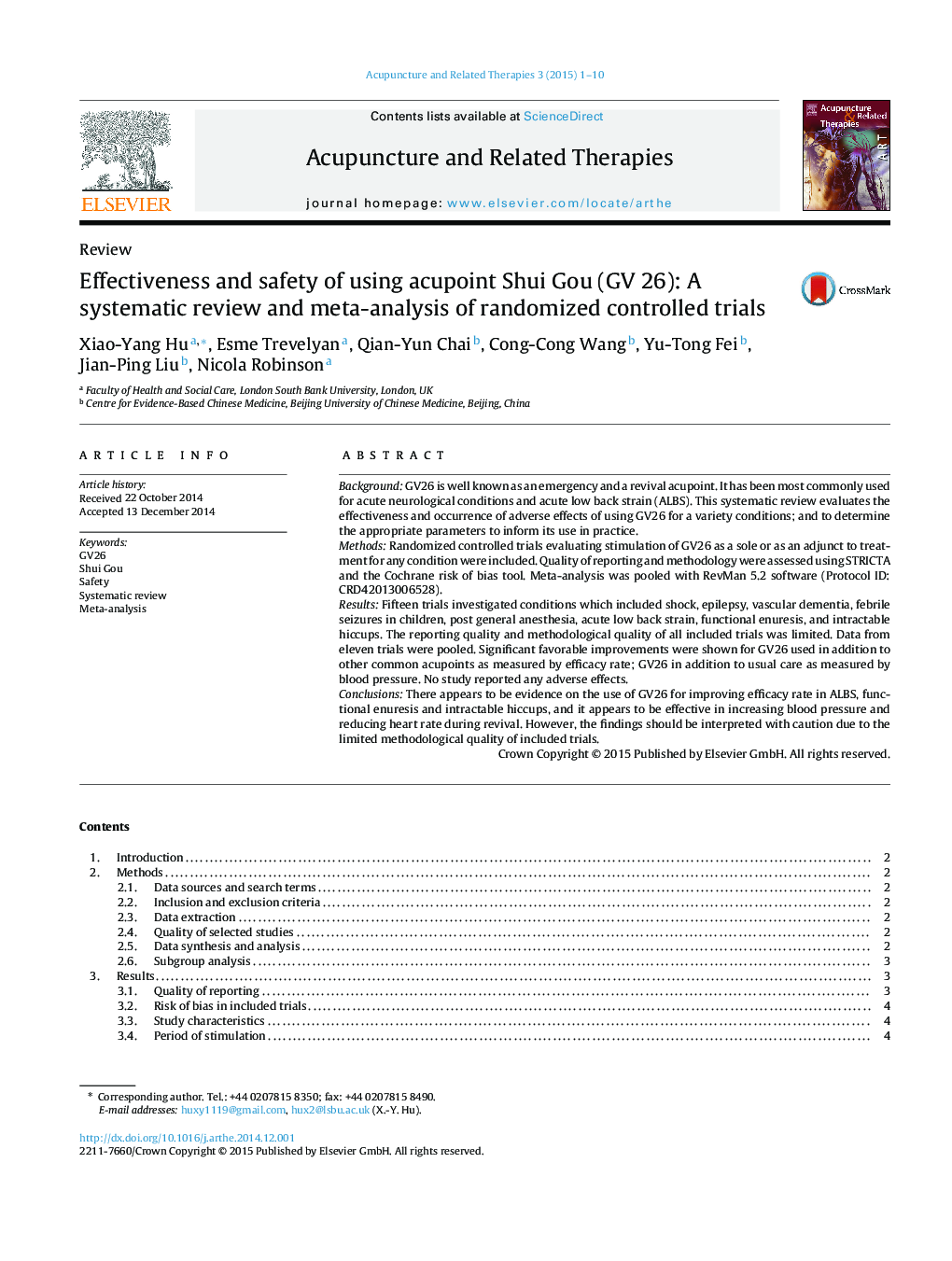| Article ID | Journal | Published Year | Pages | File Type |
|---|---|---|---|---|
| 2616177 | Acupuncture and Related Therapies | 2015 | 10 Pages |
BackgroundGV26 is well known as an emergency and a revival acupoint. It has been most commonly used for acute neurological conditions and acute low back strain (ALBS). This systematic review evaluates the effectiveness and occurrence of adverse effects of using GV26 for a variety conditions; and to determine the appropriate parameters to inform its use in practice.MethodsRandomized controlled trials evaluating stimulation of GV26 as a sole or as an adjunct to treatment for any condition were included. Quality of reporting and methodology were assessed using STRICTA and the Cochrane risk of bias tool. Meta-analysis was pooled with RevMan 5.2 software (Protocol ID: CRD42013006528).ResultsFifteen trials investigated conditions which included shock, epilepsy, vascular dementia, febrile seizures in children, post general anesthesia, acute low back strain, functional enuresis, and intractable hiccups. The reporting quality and methodological quality of all included trials was limited. Data from eleven trials were pooled. Significant favorable improvements were shown for GV26 used in addition to other common acupoints as measured by efficacy rate; GV26 in addition to usual care as measured by blood pressure. No study reported any adverse effects.ConclusionsThere appears to be evidence on the use of GV26 for improving efficacy rate in ALBS, functional enuresis and intractable hiccups, and it appears to be effective in increasing blood pressure and reducing heart rate during revival. However, the findings should be interpreted with caution due to the limited methodological quality of included trials.
